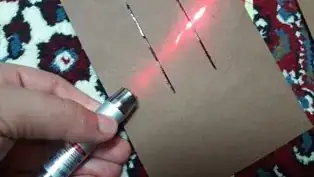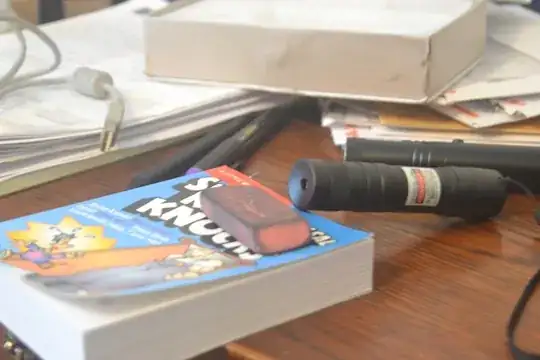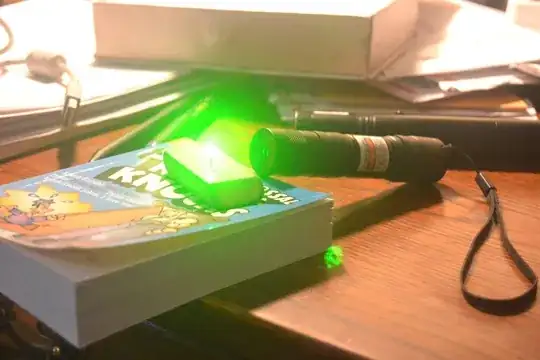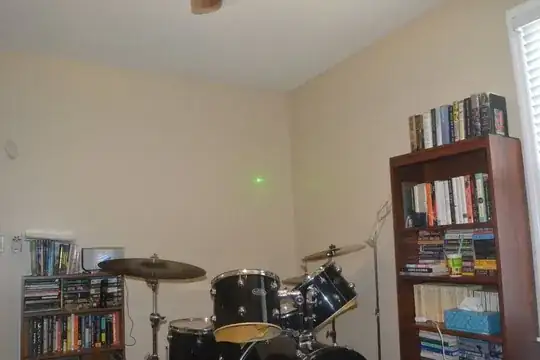My Young's slits experiment doesn’t work. I mean I tried to see wave effect of light but I didn’t see any thing expect particles! I’ve sent you a pic of my laser and a short video of the experiment. Is there any problem you think?
2 Answers
The angle between maxima in the double-slit pattern is $$ \theta \approx \frac\lambda d $$ for wavelength $\lambda$ and slit separation $d$. I wild-guess that the slits in your photograph are about 5 cm apart, so your diffraction peaks should be separated by $$ \frac\lambda d = \frac{\rm 500\,nm}{\rm50\,mm} = 10^{-5}\rm\,radian $$ which is too small for you to resolve the peaks even if you were illuminating both slits at once (which you're not).
So, your slits are too far apart. Try splitting your beam into two parts by straightening out a staple from a stapler and shining the laser on the staple; that works pretty well. You'll need to jerry-rig some mount for the staple and laser, since the diffraction pattern isn't obvious unless you can get it on the other side of the room.
Here's a quick setup I threw together. I stood a staple up on a pencil eraser and used it to split a laser beam:
The spot is on a wall about four meters away:
From up close, you can see there are about three or four maxima per fingers'-width:
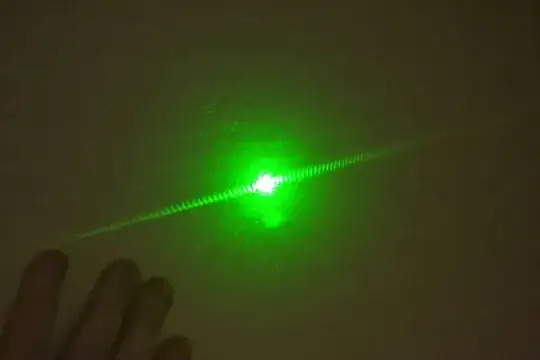
A hair is narrower than a staple, so you'd more distance between maxima if you split the beam with a hair.
- 96,301
Get a microscope slide or equivalent thin piece of clear glass. Paint the central portion with india ink or spray with black paint. The coating should be thick enough to prevent the passage of light. Let dry.
Using a razor blade and a thin straightedge, scratch a thin line through the paint across the slide (perpendicular to the long direction). As close as you can, scratch another line parallel to the first. Aim for a spacing of about 0.1 mm or less without disturbing the paint in between the lines.
Tape a piece of smooth white paper, the screen, to a box to keep it vertical on a table top. Do the same with an edge of your slide such that the slits are vertical with the long edge of the slide resting on the table. Start with the slide about 10 cm from the screen. Darken the room and shine your laser through the slits at the screen. Once you see some light on the screen, move the screen farther away to visually resolve the interference pattern. The darker the room the better.
This may take a few trials of scratching parallel lines to get a good pattern. Also, there are lenses you can put in front of your laser to make this easier.
- 1,229
